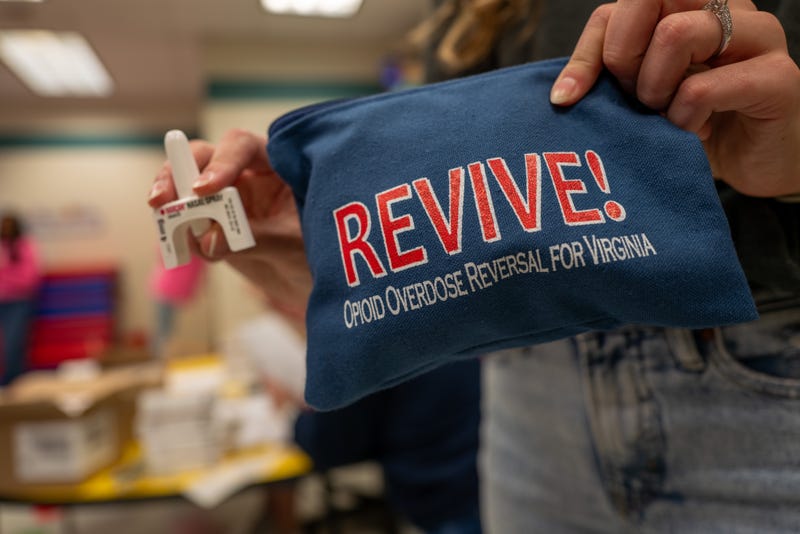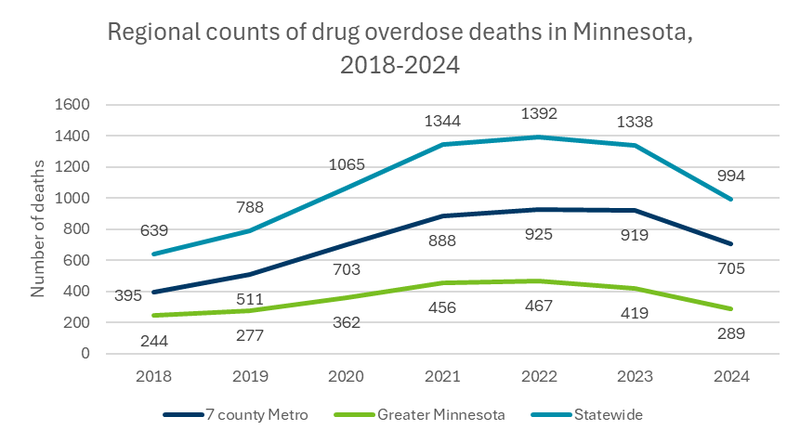
Success in drug prevention programs in Minnesota's Lower Sioux community reflect an overall decline in overdoses statewide.
The 26% decrease in Minnesota's overdose deaths recently celebrated by Governor Tim Walz is further bolstered by efforts like those at the Lower Sioux Indian community.
Having received over $300,000 in state funding over the last several years, the community is taking a dual approach by distributing life-saving drugs like Naloxone and offering options like culture-based prevention programs, according to program supervisor Heather Arneson.
"So when we say culture is prevention, we mean that if kids are learning their traditional Dakota ceremonies, traditions, and utilizing traditional medicines, they're hopefully not going to feel that pull to experiment with substances," she says.
Arneson adds that the successful model has been the key to saving lives and building a robust recovery community, and the funds are used to distribute Naloxone to anyone who needs it.
"We are so, so grateful for these funds," explains Arneson. "They have allowed us to do so much programming and I, with every event we hold, we give out those hard reduction supplies, and with every event we are destigmatizing. We are normalizing, asking for help both with both mental health and substance use."
She say her staff are seeing fewer lives lost and a growing community of people in recovery due to these efforts.
“This decline in overdose deaths and hospitalizations shows what can happen when partners come together with a shared goal. This progress is thanks to the collaboration of communities, state and local governments, Tribal Nations, health care providers, and public health and safety,” said Minnesota Commissioner of Health Dr. Brooke Cunningham. “Working together, we have expanded naloxone access and strengthened prevention and recovery supports. But we’re not done. We have to keep the momentum going to further prevent the tragic consequences of fentanyl and other drugs in our communities.”
On Tuesday, Walz announced that for the second year in a row, Minnesota saw a drop in overdose deaths and hospitalizations. Overdose deaths decreased 26%, from 2023 to 2024, while hospital-treated nonfatal overdoses decreased 19%.

These decreases were seen in nearly every region of the state and across demographics.
“This is incredible progress and a testament to the shared goals, dedication, and overdose prevention efforts happening across Minnesota,” said Governor Walz. “Together, we’re saving lives and showing what’s possible when we meet this crisis with compassion and action. This is measurable progress, and we’re going to keep working to save lives.”
The largest decrease in overdose deaths, 31%, occurred in Greater Minnesota counties, while metro counties experienced a 23% decrease.
In 2024, opioid-involved deaths in Minnesota decreased by 32%, including a 35% decline in synthetic opioids, primarily fentanyl. All other opioid-related categories, including prescribed opioids, heroin, and methadone, continued to decline. Nonfatal overdoses also decreased across all other substance categories, with nearly 15 nonfatal overdoses treated in hospitals for every one overdose death. This downward trend reflects a national pattern and underscores the effectiveness of sustained prevention and overdose prevention strategies.
